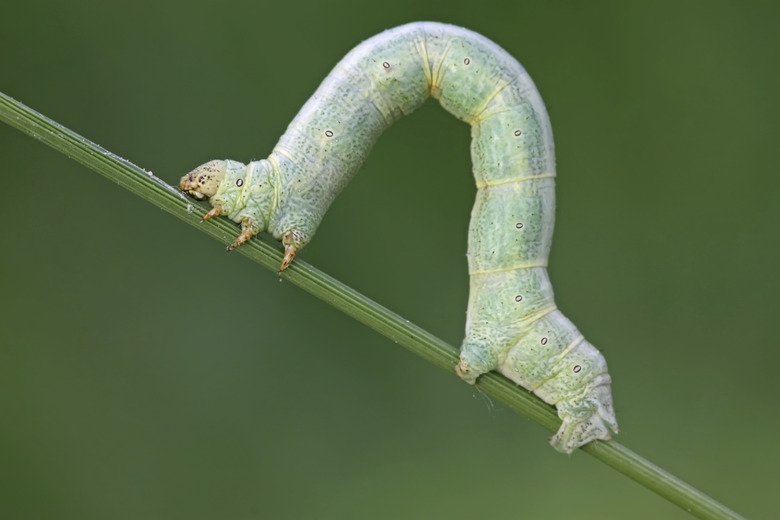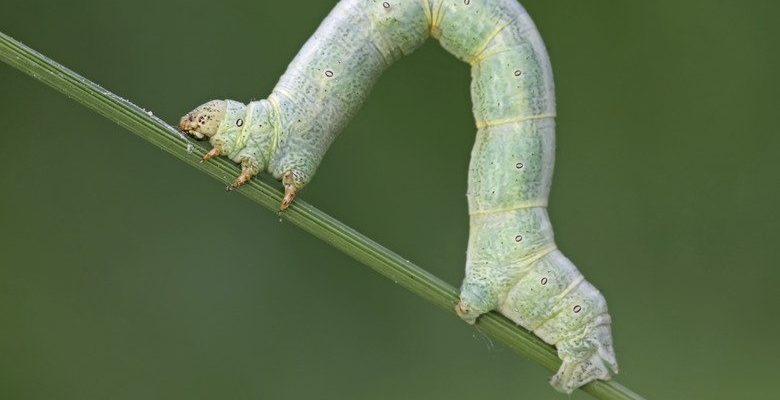
Imagine them as the underappreciated side characters in a nature play, quietly performing their roles while the headliners take center stage. In this article, we’ll dive into the intriguing world of inchworms, shedding light on when and why they appear, how they fit into the ecosystem, and what that means for us. Let me explain the seasonal emergence patterns and why they’re such a big deal.
What Are Inchworms, Anyway?
Inchworms are not actually worms; they’re the caterpillar stage of various moth species. These critters belong to the family Geometridae. When you look at them, you’ll notice they have a unique way of moving. Instead of traditional crawling, they create a looping motion—hence the name “inchworm.” You might be wondering how they get around like that. Well, it’s all about their muscles and the way they can “measure” their movement, so they seem to inch along slowly.
These little guys can be found in many environments, from forests to gardens. Their distinct green or brown colors help them blend into their surroundings, making them less visible to predators. They’re like the stealthy ninjas of the insect world.
The Life Cycle of an Inchworm
Understanding when inchworms emerge starts with knowing their life cycle. The journey begins when adult moths lay eggs, often on the underside of leaves. These eggs hatch in the spring, usually when temperatures start rising. The tiny inchworms emerge, ready to munch on leaves and grow.
During their early days, they eat voraciously. This stage is crucial because they need to gather energy for their metamorphosis into moths. Once they grow large enough, they enter a pupal stage where they’ll eventually transform into adult moths and start the cycle all over again. Think of it like a nature soap opera—lots of drama, growth, and transformation!
When Do Inchworms Emerge?
Timing is everything when it comes to inchworm emergence. Typically, these creatures begin to show up around early spring, often coinciding with the blooming of specific trees and plants, like elm and oak. This emergence usually aligns with warmer temperatures and increased sunlight—ideal conditions for growth.
Here’s the thing: if you’re in a cooler area, you might not see them until mid to late spring. It’s all about nature’s schedule. For gardeners and nature lovers, this is an exciting time, as seeing inchworms can signal a healthy ecosystem.
Factors Affecting Emergence Timing
Several factors can influence when inchworms decide to make their grand entrance:
- Temperature: Warmer weather often signals it’s time to emerge.
- Food Availability: They need food sources, which is typically abundant in spring.
- Predator Presence: If there are lots of predators around, they might delay their appearance to stay safe.
Each year can be different based on the climate, so keep an eye out for these little guys. They might show up earlier or later depending on local conditions.
Why Are Inchworms Important to the Ecosystem?
You might be surprised to learn that inchworms play a crucial role in their environment. As they feed on leaves, they help control the growth of plants and trees. This is nature’s way of keeping things balanced.
Additionally, inchworms serve as a food source for various animals. Birds, small mammals, and other insects rely on these little caterpillars as a vital part of their diet. Without inchworms, the food web would be disrupted, leading to consequences up the chain. So, the next time you see an inchworm, remember—it’s not just a little caterpillar; it’s part of a much larger story.
Tips for Observing Inchworm Emergence
If you’re keen on spotting inchworms, here are some tips to enhance your experience:
- Timing: Go out in the early morning or evening when they’re most active.
- Location: Look for them on trees, especially those known to host them, like oaks and maples.
- Patience: Sometimes, you have to wait and watch quietly. They’re masters at camouflage!
Observing inchworms can be a delightful springtime activity. You’ll discover their unique movements and appreciate their role in nature more.
Common Misconceptions About Inchworms
There are a few misconceptions about inchworms that can create confusion. For instance, while they do have a somewhat “wormy” appearance, they are actually the caterpillar stage of moths. This causes some folks to think they’re harmful pests. In reality, they’re a natural part of many ecosystems.
Another common myth is that they only emerge during specific months. As we’ve discussed, emergence depends largely on environmental factors, not just the calendar. Keeping an open mind about nature can lead to some wonderful discoveries.
So, there you have it! The world of inchworms is more fascinating than it appears at first glance. Understanding their emergence patterns helps us appreciate these tiny creatures and their important roles in nature.
Next time you spot an inchworm, take a moment to enjoy the experience. Watch how they move, where they hang out, and consider their place in the ecosystem. Whether you’re an avid nature enthusiast or just curious, there’s beauty in the small things. Happy inchworm watching!

